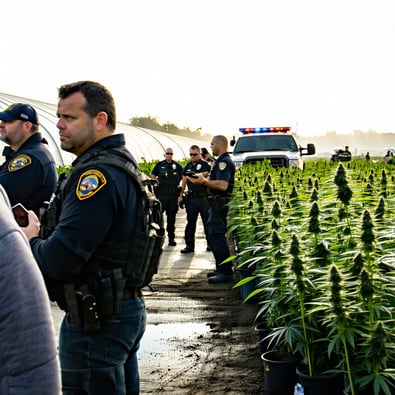California, one of the United States’ largest and most lucrative legal cannabis markets, is grappling with a critical issue. In 2023, the state saw $5.1 billion in cannabis sales, with five million Californians using cannabis products monthly.
However, this thriving market was abruptly shaken by a report released by the Los Angeles Times and WeedWeek, revealing alarming levels of pesticides in several legalized cannabis products. The findings have sparked an urgent need for action.
According to the report, some products were tainted with pesticides at levels higher than those permitted by the U.S. Environmental Protection Agency (EPA) for a single exposure. Unsurprisingly, this has raised concerns among adult-use consumers, medical cannabis patients, physicians, growers, retailers, and other stakeholders.
As a business owner servicing clients across the cannabis, agriculture, and apiculture industries, I support stricter regulations regarding pesticide use and encourage discussions on how to phase them out gradually. Nothing changes overnight, so it’s important to recognize that this transition, though slow, is necessary for the safety of consumers and the environment.
What Did The Report Reveal?
The report found that out of 42 legal cannabis products from California retail stores, 25 showed pesticide concentrations above the state’s allowance or exceeded federal tobacco product standards when tested in private labs. Some products tested positive for as many as two dozen pesticides.
Vapes from five well-known cannabis brands tested positive for pesticide levels exceeding the EPA standard for risk of harm from a single exposure. Users exposed to this concentration of pesticides may experience symptoms such as eye, lung, and throat irritation, headaches, diarrhea, and abdominal pain.
One of the most concerning findings was the presence of chlorfenapyr, an insecticide not permitted in any food products and banned entirely in California cannabis. Chlorfenapyr levels were found to be 2,000 times over the legal limit. Exposure to this pesticide can cause nausea, vomiting, headaches, difficulty breathing, and short-term memory loss. In animal testing, it has been shown to concentrate in breast milk, increasing offspring mortality.
While some pesticides were found in low concentrations that risk long-term harm from repeated use, the contaminants identified have been linked to cancer, liver failure, thyroid disease, and genetic and neurologic harm to users and unborn children. This highlights the urgency of addressing the potential health risks posed by contaminated cannabis products.
What is a Pesticide?
A pesticide is any substance that kills pests and organisms that hinder plant growth and a successful harvest. Pesticides can be synthetic or biological and are used to control unwanted plant growth, pests, fungi, and rodents. However, not all pesticides are equally toxic.
For example, dichlorodiphenyltrichloroethane (DDT) was widely used in the mid-20th century to control insects on crops but was banned in 1972 due to its environmental harm and potential links to cancer.
Alternatives to Traditional Pesticides
Fortunately, alternatives to traditional chemical pesticides are available and may even be more effective in certain cases.
Neem oil, for example, is a natural pesticide that poses little harm to humans and the environment when used correctly. It can prevent fungal infections like powdery mildew and combat pests like aphids and mites. However, neem oil should not be applied to buds and should be used with caution to avoid ingestion.
Diatomaceous earth, made from fossil dust, is another option. It damages insects by contact but should not be used when cannabis plants are flowering to avoid contamination. Growers should also wear masks during application to avoid inhalation.
Innovative alternatives powered by biomimicry technology are emerging, such as crop management solutions that create safe oxidants from amino acids and water. These solutions are effective against pests and plant disease throughout the plant’s life cycle without posing risks to employees or consumers.
Driving Innovation
While alternatives to traditional pesticides exist, businesses, consumers, and regulators must work together to transition toward a greener future. Consumers can use their purchasing power to favor cannabis products made without harmful pesticides, while businesses should adopt greener crop management practices. Regulatory agencies must tighten restrictions on pesticide use and fund research into safer alternatives.
The time for action is now. With new crop management solutions emerging, the industry has an opportunity to transition away from harmful chemical pesticides and adopt safer, greener alternatives.
For more Cannabis News like this, circle back to 420intel.com!
420 Intel News | 420 Advertising | Cannabis Business News | Medical Marijuana News | Recreational Marijuana News





